Lao Cai Ta Thanh Commune, Muong Khuong District, is shrouded in mist. Here, ancient tea trees stand proudly in the cold, preserving the soul of the land and vitality in the great forest.
Lao Cai Ta Thanh Commune, Muong Khuong District, is shrouded in mist. Here, ancient tea trees stand proudly in the cold, preserving the soul of the land and vitality in the great forest.
The road from the center of Muong Khuong district (Lao Cai) leading to Ta Thanh commune is no longer bumpy. The newly paved smooth asphalt road takes me to the land known as "the sleeping place of ancient tea trees". The deeper I go, the thicker the fog becomes, the golden fog-breaking lights from the motorbikes of the locals here weave through the fog, like small stars illuminating the way in the middle of the vast forest.
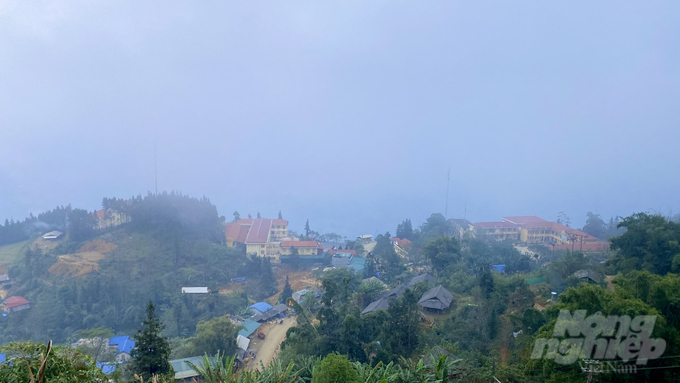
A corner of Ta Thanh highland commune (Muong Khuong, Lao Cai) is covered in fog. Photo: Tu Thanh.
Ta Thanh is a highland commune located right next to the Chay River, over 99% of the population is Mong. The people's lives are still difficult, the weather is harsh, the winter is long and cold, these conditions also nurture a large area of ancient Shan Tuyet tea, considered the "green treasure" of this land.
Treasure standing tall in the mist
Following the instructions of the local people, I went straight to Ta Thang and Su Di Phin villages (Ta Thang commune) - considered the headquarters of the ancient tea forest. The towering Shan Tuyet tea trees towered tens of meters high, their trunks rough and mossy, as if they had witnessed hundreds of cold winters. No one knew when they had appeared, but it was known that the vast ancient tea forest had been here before the Mong people set foot on this land.
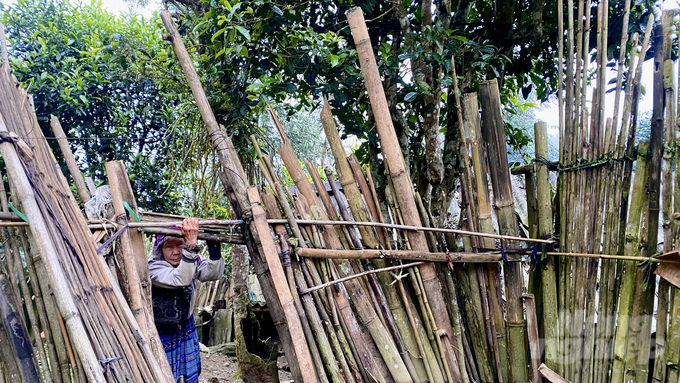
The small house of Mr. Thao Dinh and Mrs. Giang Sinh in Su Di Phin village, Ta Thanh commune is surrounded by ancient tea trees that are hundreds of years old. Photo: Tu Thanh.
Stopping by a small house, I was welcomed by Mrs. Giang Sinh, an 84-year-old Mong woman. She walked briskly to the gate, her haggard face glowing with hospitality. "Come in and have a drink to warm yourself up," she said in Mong mixed with a little Mandarin.
In a simple hut, Mr. Thao Dinh (87 years old), Mrs. Sinh’s husband, poured me a bowl of hot, steaming Shan Tuyet green tea. The tea tasted slightly bitter, with a sweet aftertaste, as if it contained the flavor of the mountains and forests, of the wind and the hospitality of the people here. “In the past, we were very poor, so tea was only for drinking at home, but now it has become a source of hope for the people,” Mr. Dinh shared.
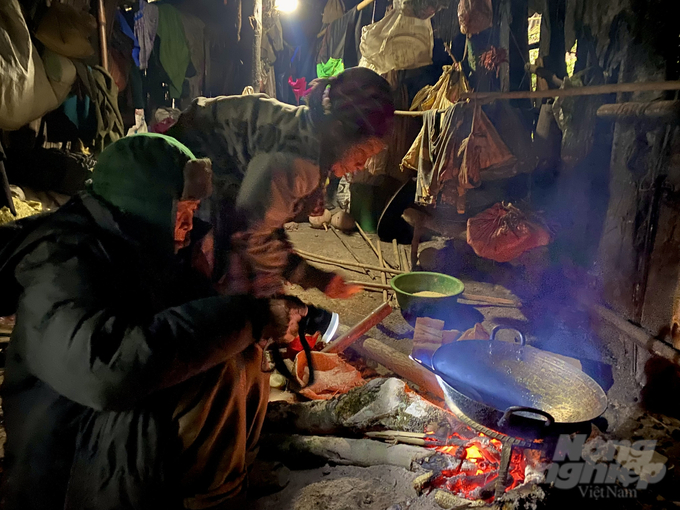
Inside the small house, Mr. Dinh and his wife live here to raise chickens, grow vegetables and preserve ancient tea trees. Photo: Tu Thanh.
Tea trees are not only a source of livelihood but also a source of pride for Mr. Thao Dinh's family. "This ancient tea garden was left by our ancestors. My family currently has nearly 70 ancient tea trees, which generate an annual income of about 20 - 30 million VND, enough to improve our lives compared to the past when people only knew how to grow corn and rice."
Mr. Dinh laughed when talking about the times he climbed the tall tea trees to pick leaves: “Now my legs are weak, so I leave the tea picking to my children and grandchildren. Every tea season, my wife and I just go out to clear the land, watching the tea trees grow and feel warm inside.”
Leaving my grandparents’ small hut, I continued to walk under the vast canopy of ancient tea trees, feeling the cool breath of the mountains and forests and the rare peace. In the misty space, I felt like time was passing slowly. Each green tea leaf, each tree branch told its own story - a story about the strong vitality of nature, about human perseverance and about the harmony between the two.
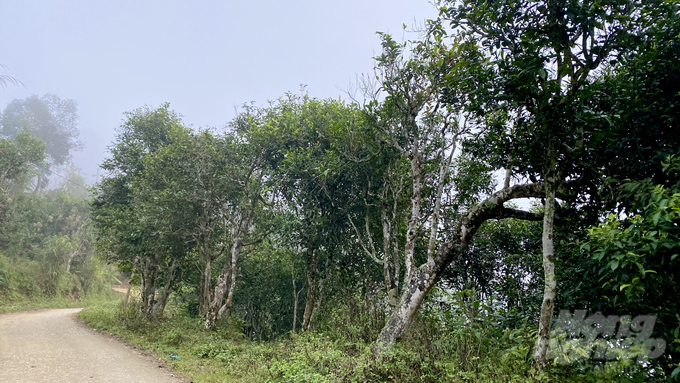
Ancient Shan Tuyet tea trees are tens of meters high, with rough, mossy trunks. Photo: T.Thanh.
Untapped potential
It was getting dark, I followed the concrete road from the old tea forest headquarters, leaving Su Di Phin village to Ta Thang village and arrived at the house of Mr. Sung Pao, the Party Secretary of Ta Thang village, just as he and his wife had just returned from helping a family build a new house, their muddy motorbike parked in the corner of the yard. Mr. Pao was a Mong ethnic man in his 40s, with a strong build and a dark face, and welcomed me with a gentle smile.
Mr. Pao began the story when I asked about the origin of the tea forest: “People here have lived on ancient tea trees for generations. No one knows exactly when the "tea trees" were born, only that they have been attached to it since their grandfathers and fathers. Ta Thang village currently has about 15 hectares of ancient tea trees, but there is still no brand name.”
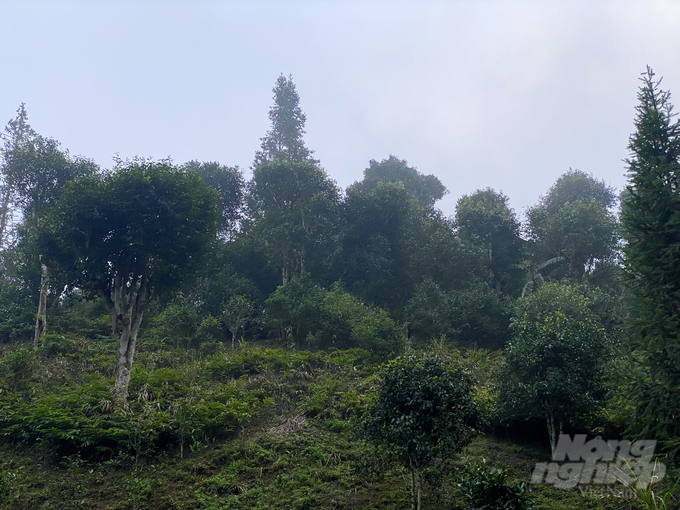
Ancient Shan Tuyet tea trees cover the hills in Ta Thanh. Photo: Tu Thanh.
Mr. Pao said that the tea here is different from other regions, it does not need to be fertilized, not even fertilized or pruned, it is just left to grow naturally. If fertilized or pruned, buyers will immediately reject it because the tea will become more bitter and lose its quality.
The two main harvests are in April and July every year. This year, fresh tea buds are purchased at a price of VND25,000 - 30,000/kg. That number makes Mr. Pao feel sad when he remembers the period in 2017 - 2018, when Chinese traders came directly to buy at the price of VND85,000/kg. "At that time, tea prices were high, and people were very excited. Since the Covid-19 pandemic, Chinese traders have not come anymore. We had to sell tea to traders in Lao Cai city. They bought it and also brought it to China, but at a much lower price," Mr. Pao said.
Mr. Pao said that picking old tea trees is not easy, many trees are tens of meters high, people have to climb hard, but in return it does not take too much care. For example, Mr. Pao's family has more than 1 hectare of old tea trees, each year they earn about 50 - 60 million VND.
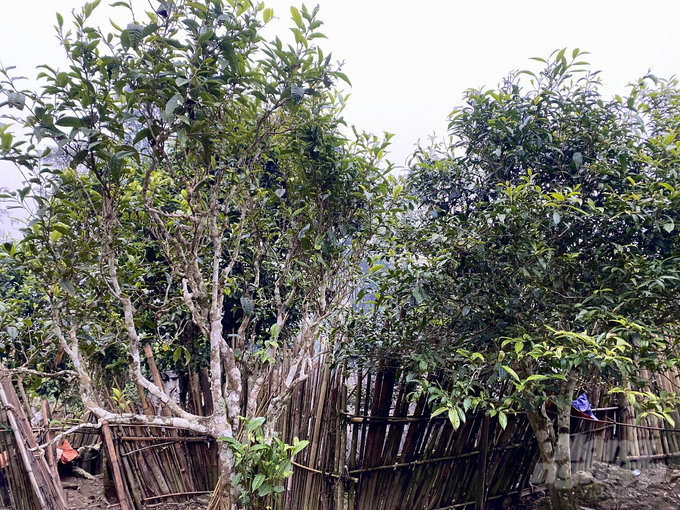
Shan Tuyet tea is everywhere, on the fields, in the gardens, and even on the porches. Photo: Tu Thanh.
In Ta Thanh, most people only sell fresh tea buds, although there is a processing factory of Tien Thien Tea Company specializing in making high-quality tea operating in the area. According to Mr. Pao, the company only operates for 1-2 weeks during each tea season, then leaves. There were also some groups of traders who came here to propose opening a processing factory, but because Tien Thien Tea Company was already located in the area, they withdrew.
“Tea is the main crop, but the output is unstable, so people’s lives are still difficult,” Mr. Pao sighed. Ta Thang village has more than 60% poor households, the economy mainly depends on growing upland rice, cassava and small-scale livestock. The average income of people is only about 20 million VND/year.
To alleviate poverty, local authorities have also provided ancient tea varieties for people to grow more, along with encouraging pig farming.
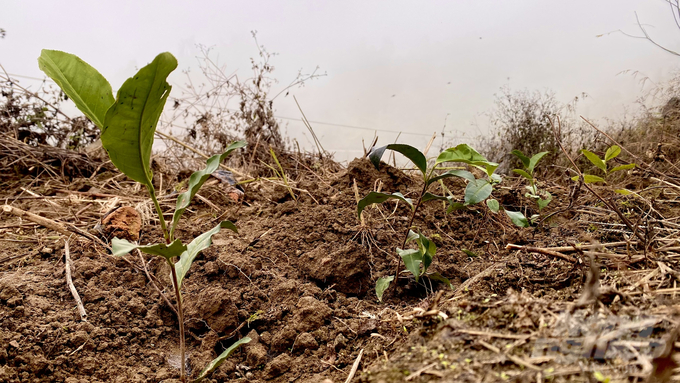
Many newly planted areas of Shan Tuyet tea are growing in the mist every day. Photo: Tu Thanh.
With the determination to improve the lives of the people, the Party Committee and People's Committee of Ta Thang commune have built a clear development orientation, focusing on promoting the restructuring of crops and livestock in accordance with reality, with the main focus being tea trees and black pig farming. Currently, the commune has an area of old tea trees being exploited with trees over 1.5m of 16.5 hectares, the remaining trees under 1.5m of 72 hectares.
Mr. Ly Van Phin, Acting Chairman of Ta Thanh Commune People's Committee, said that the Commune People's Committee is currently planning to expand the tea area, link production with companies, and create tea products with higher value. Up to now, the commune's poverty rate is over 40%, down nearly 10.5% compared to last year.
It can be seen that the ancient tea trees here have great potential and are the pride of the Mong people. If they are invested in more systematically, the lives of the people here will surely change thanks to the tea trees.
Source: https://nongsanviet.nongnghiep.vn/bau-vat-xanh-giua-dai-ngan-suong-phu-d413680.html



![[Photo] Overcoming all difficulties, speeding up construction progress of Hoa Binh Hydropower Plant Expansion Project](https://vstatic.vietnam.vn/vietnam/resource/IMAGE/2025/4/12/bff04b551e98484c84d74c8faa3526e0)



![[Photo] Closing of the 11th Conference of the 13th Central Committee of the Communist Party of Vietnam](https://vstatic.vietnam.vn/vietnam/resource/IMAGE/2025/4/12/114b57fe6e9b4814a5ddfacf6dfe5b7f)
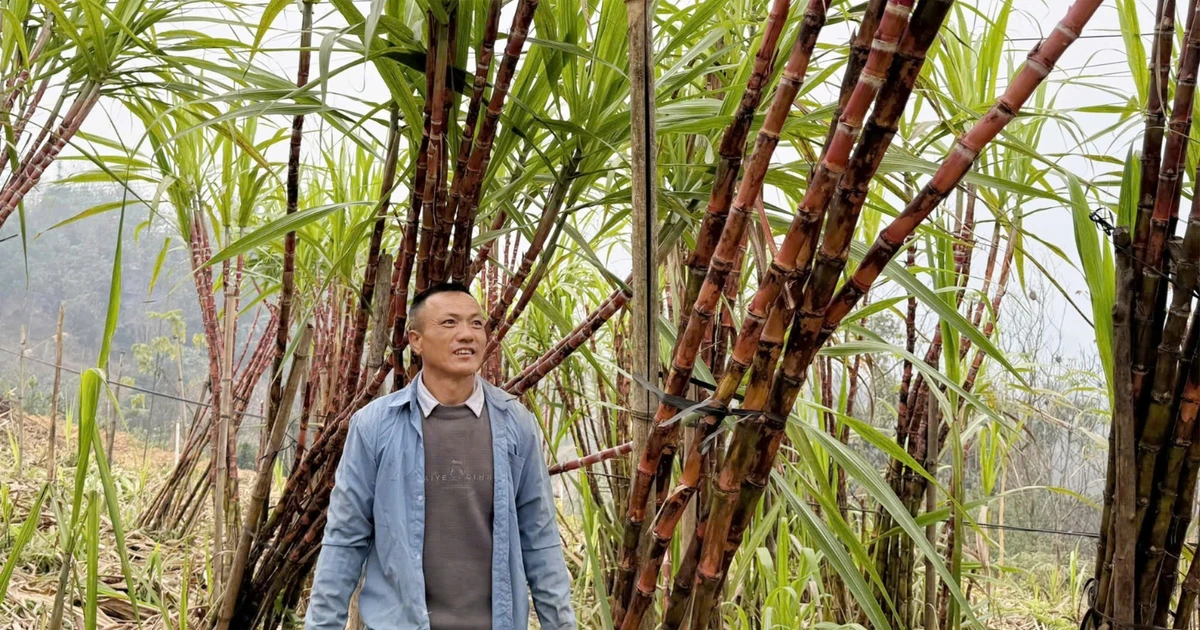

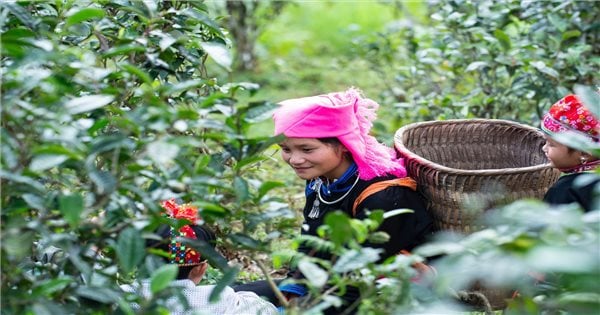
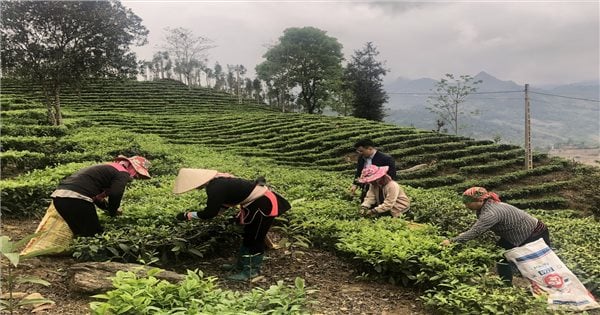
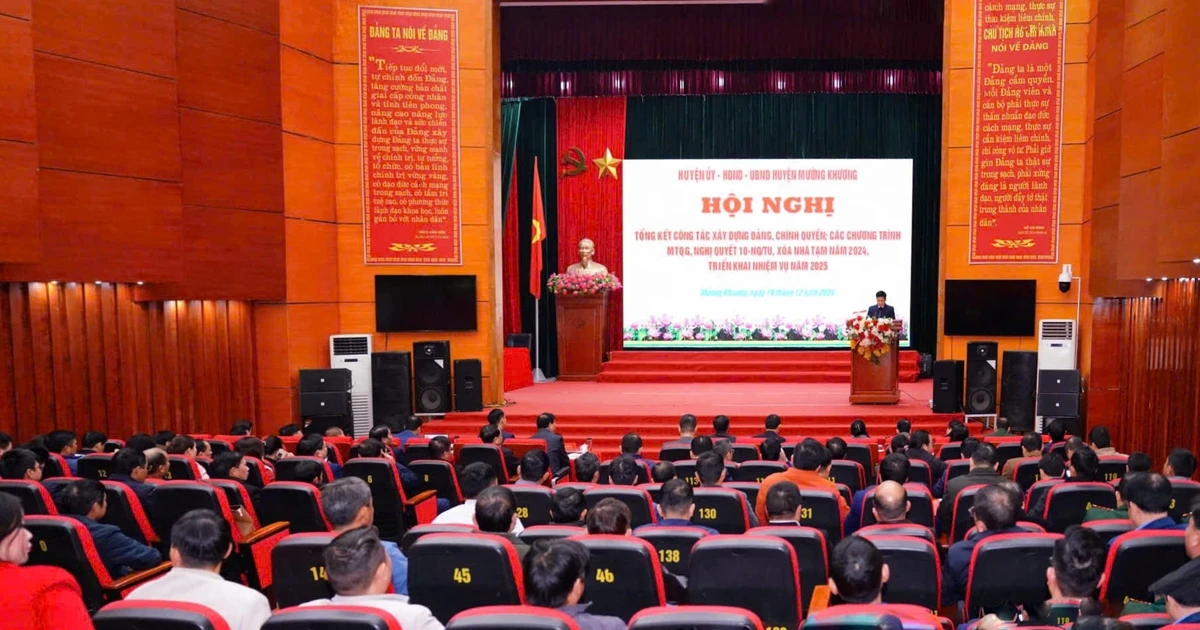
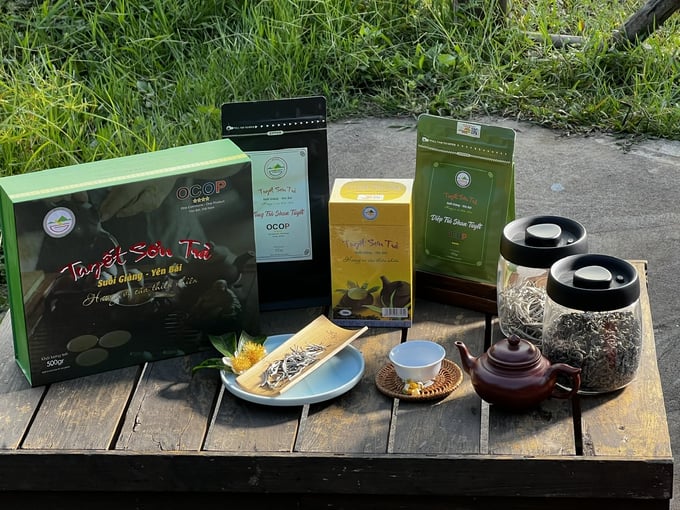
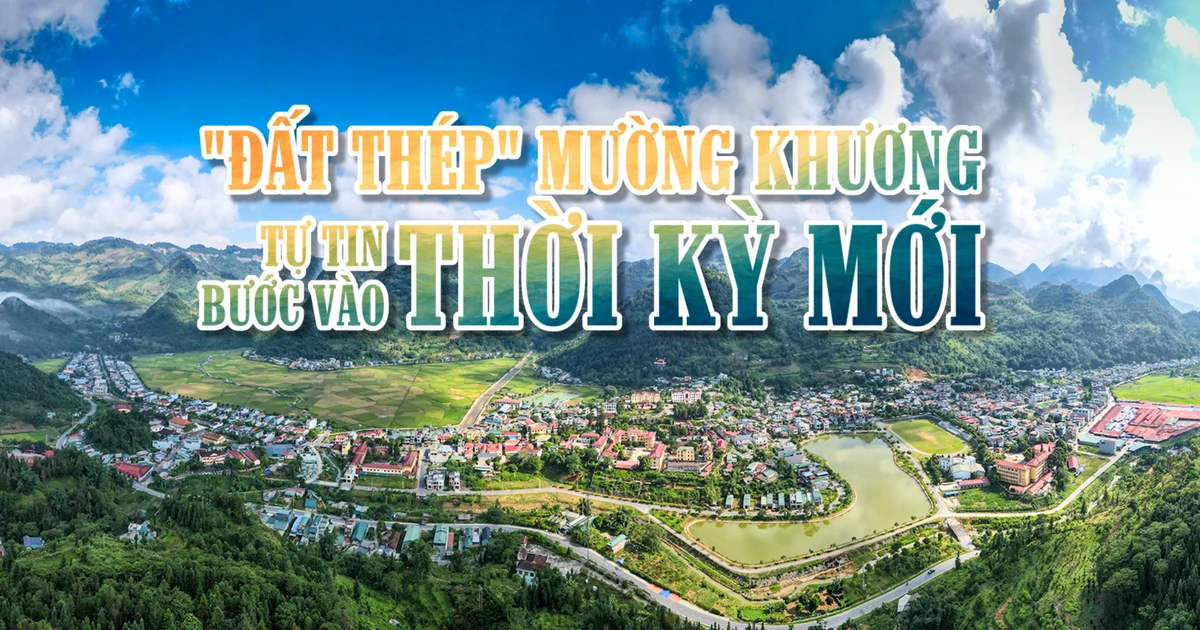





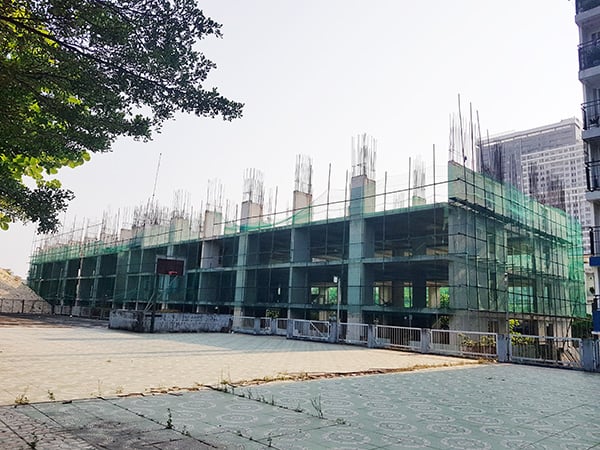




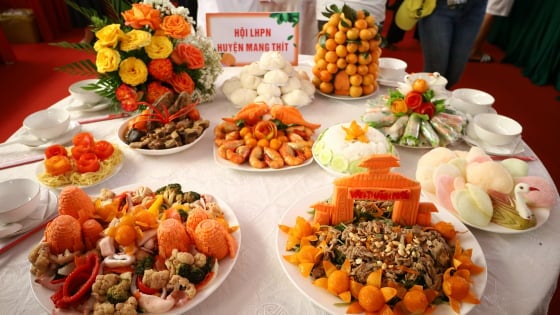
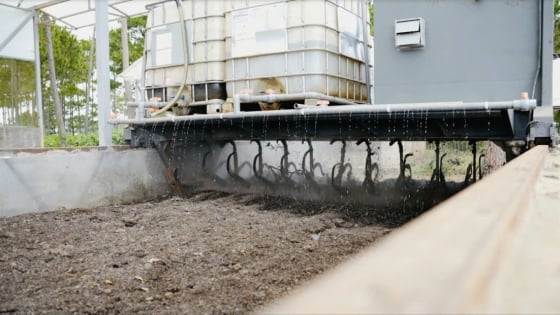
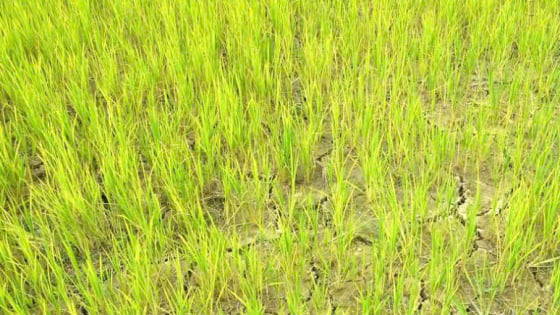

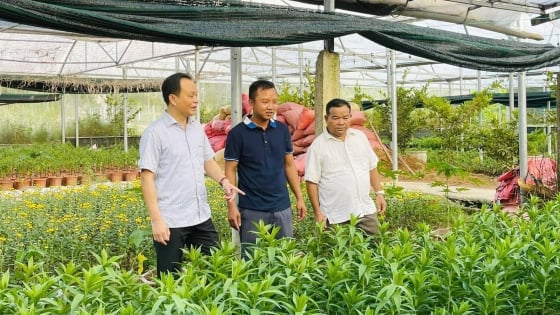



















































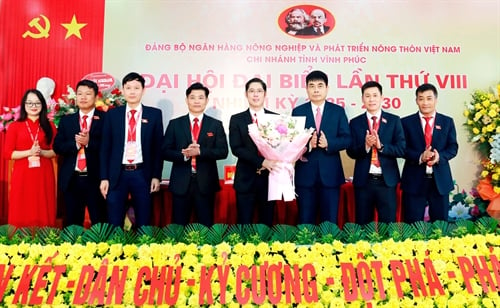
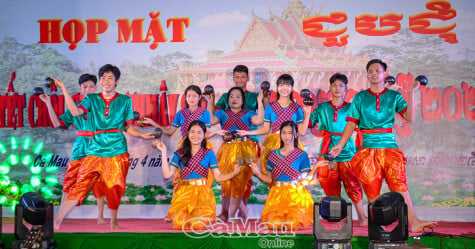











Comment (0)